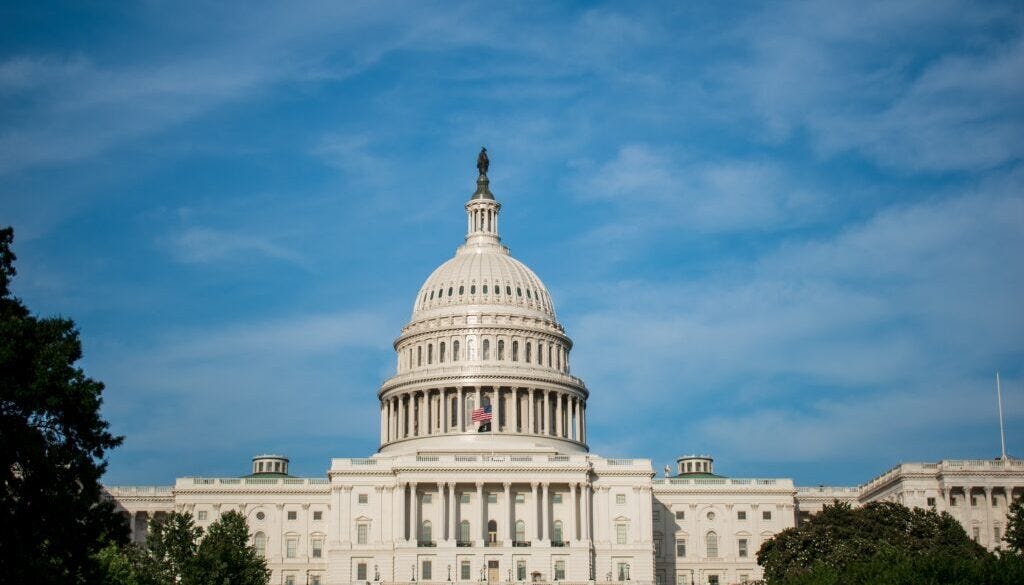Must-read recap: The New Lede's top stories
Another blow to rooftop solar; battle brewing over pesticide preemption; EPA nitrate risk assessment; threat of lawsuit seeking climate pollution cap; North Dakota towns fight Farm Bureau.
Proposed decision could deal another blow to California rooftop solar
California regulators will vote this month on proposed key changes to programs that incentivize solar energy installations at apartment buildings, schools, and farms in a move critics fear will put the benefits of clean, renewable energy out of reach for many people.
“The proposed changes will hurt all rooftop solar, and the state’s decarbonization goals,” said Self Help Enterprises, a low-income housing program in Visalia, California, in an email to The New Lede. “However, low-income populations will be hit especially hard since a higher percentage of their income goes to rent and utilities.”
Hundreds of groups that advocate for clean energy and environmental justice, farms, and schools have signed letters protesting the proposals along with 135 local officials.
The vote is currently set for Nov. 16 after being postponed multiple times in the face of strong opposition. The vote comes about seven months after California’s net metering (NEM) 3.0 policy went into effect, which drastically decreased the value of the solar energy credits that homeowners receive when they share excess energy they produce with the grid. (Read the rest of the story.)
Battle brewing over proposed US law that would protect pesticides
(This article is co-published with The Guardian.)
Cancer patients are celebrating a string of courtroom victories after juries in three US states recently ordered Germany’s Bayer to pay more than $500 million in damages for failing to warn about the health risks of its Roundup herbicides. But the consumer wins come as proposed federal legislation backed by Bayer and the powerful agricultural industry could limit similar cases from ever going to trial in the future.
Dubbed the Agricultural Labeling Uniformity Act, the proposed measure would provide sweeping protections for pesticide companies and their products, preempting local governments from implementing restrictions on pesticide use and blocking many of the legal claims that have been plaguing Bayer, according to the American Association for Justice (AAJ) and other critics.
The measure, which was introduced over the summer, has been gaining traction as a potential amendment to the pending Farm Bill. More than 360 agricultural organizations are throwing their support behind the measure, which was introduced by US Reps Dusty Johnson and Jim Costa. Lobbying disclosure records show that Bayer and the industry-funded CropLife America have made passage a top priority. A similar measure is under consideration in the US Senate.
The new law is needed because pesticides are “paramount to growing our food and keeping communities safe,” according to CropLife.
In response, on Oct. 27, more than 150 US lawmakers signed a letter to the leadership of the House Committee on Agriculture expressing “strong opposition” to the preemption measures, saying they would overturn “decades of precedent” and have a “significant impact” on public safety. (Read the rest of the story.)
EPA restarts assessment of health risks from nitrate in water
The US Environmental Protection Agency (EPA), reversing a Trump-era decision, is restarting a human health assessment of nitrate and nitrite, a move that has potentially far-reaching regulatory implications for one of the country’s most pervasive drinking water contaminants.
The EPA suspended its nitrate assessment in December 2018. It was one of nine chemicals that the Trump administration deemed no longer a priority for evaluation by the agency’s health assessment division known as the Integrated Risk Information System, or IRIS.
That changed in June when the EPA quietly reinserted the nitrate assessment into the IRIS agenda “to address an agency priority.”
The decision to take a closer look at the chemical comes at a time of increased scrutiny and public concern over nitrate exposure and human health. Nitrate forms when nitrogen is exposed to oxygen in the air. An exponential increase in the use of synthetic, nitrogen-based fertilizers since 1950 supercharged the production of corn and soybeans. The number of large livestock feeding operations — and the amount of manure they produce — also increased rapidly. (Read the rest of the story.)
“Time is up” — EPA facing threat of citizens lawsuit seeking cap on climate pollution
US regulators are breaking the law by failing to set a national cap on climate pollution, endangering human health and the environment, according to a consortium threatening to file a citizens’ lawsuit against the government to force “stronger, faster actions to address the climate emergency.”
The states of Oregon and Minnesota, along with the San Carlos Apache Tribe and climate advocacy organizations 350.org and the Center for Biological Diversity, said this week that they plan to sue the US Environmental Protection Agency (EPA) demanding the agency respond to a 2009 petition for regulation of greenhouse gases under the Clean Air Act.
In a letter addressed to EPA Administrator Michael Regan, the consortium pointed out that the EPA has long known that climate changes are occurring that are harming human health and that the “effects will only worsen over time” without regulatory action.
“In the nearly fourteen years since the petition has been pending before EPA, the climate crisis has become far more dire, devastating lives, livelihoods, and ecosystems,” the letter states. (Read the rest of the story.)
“What we’re up against” — North Dakota towns fight farm bureau to try to keep water clean
(This report, co-published with Circle of Blue, was made possible by an investigative reporting fellowship awarded by the Alicia Patterson Foundation and the Fund for Investigative Journalism. It is part of an ongoing series looking at how changing agricultural policies are affecting environmental health.)
When Clark Steinhaus first heard about a plan to build a feeding operation for 2,499 hogs near the shoreline of North Dakota’s largest natural lake, he was alarmed. As chair of Pelican Township’s board of supervisors, Steinhaus worried the manure generated by so many hogs could easily contaminate area waterways, including 160,000-acre Devils Lake and its 375 miles of shoreline.
His concerns were not surprising given the fact that each year, US industrial-scale feeding facilities – the standard for American meat and dairy production – generate, store, and spread millions of gallons of untreated liquid feces and urine across farmland. Mammoth dairy, hog, poultry, and beef cattle operations are notorious across Corn Belt states for fouling the air with rank odors and contaminating surface and groundwater with toxic nitrates, phosphorus, and bacteria.
“We got documentation from the pig boys’ engineers that said they’re going to build a 12-foot deep pit under the facility – four-inch concrete, no rebar, only wire mesh. No rubber lining,” said Steinhaus. “They were going to store millions of gallons of manure in that pit. Yeah. Water pollution is a concern here.” (Read the rest of the story.)







